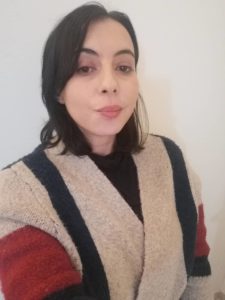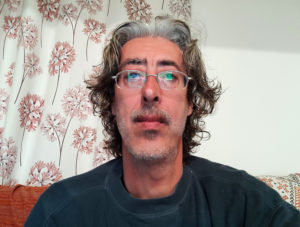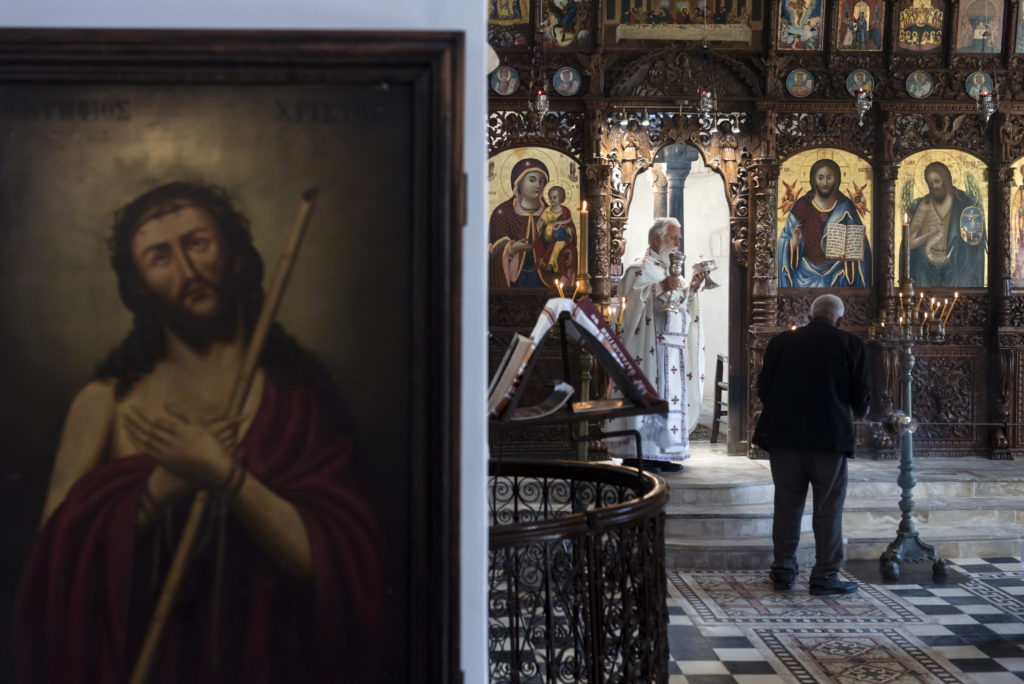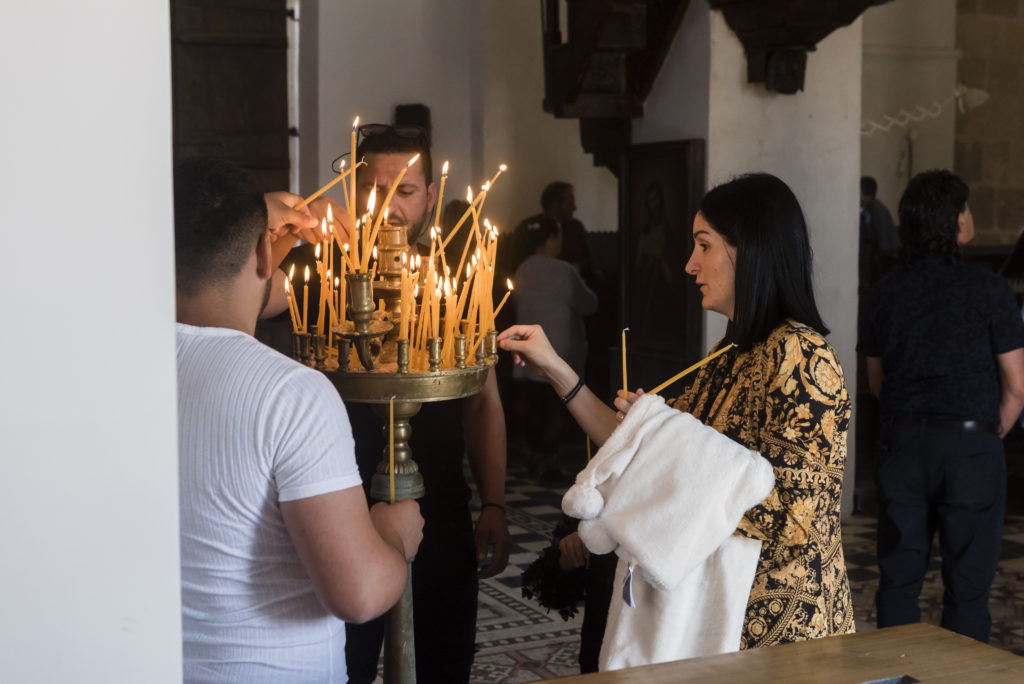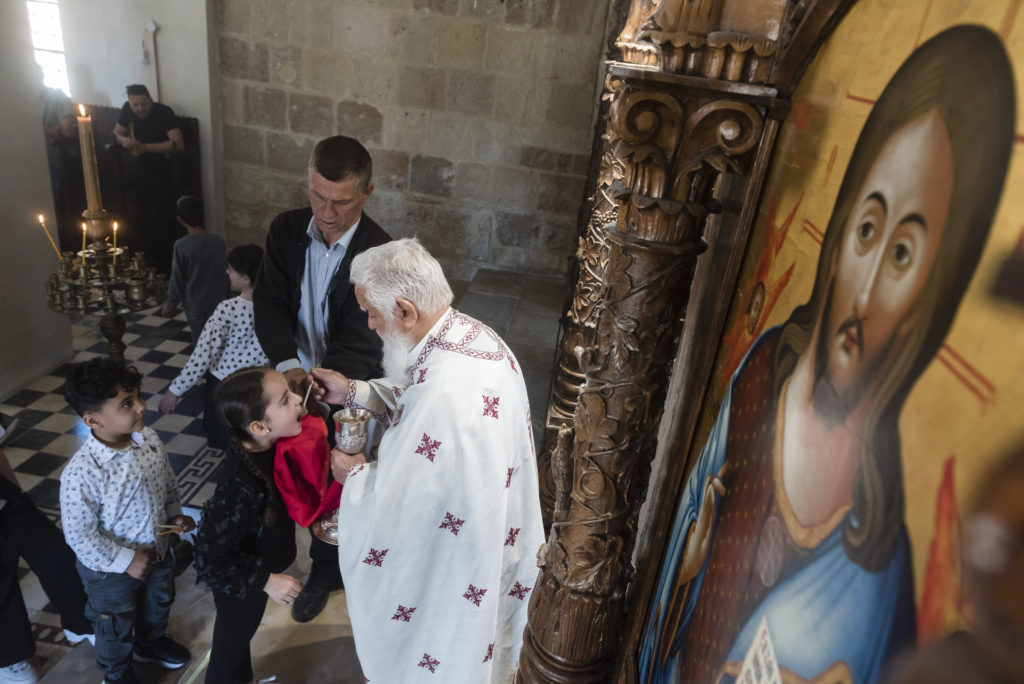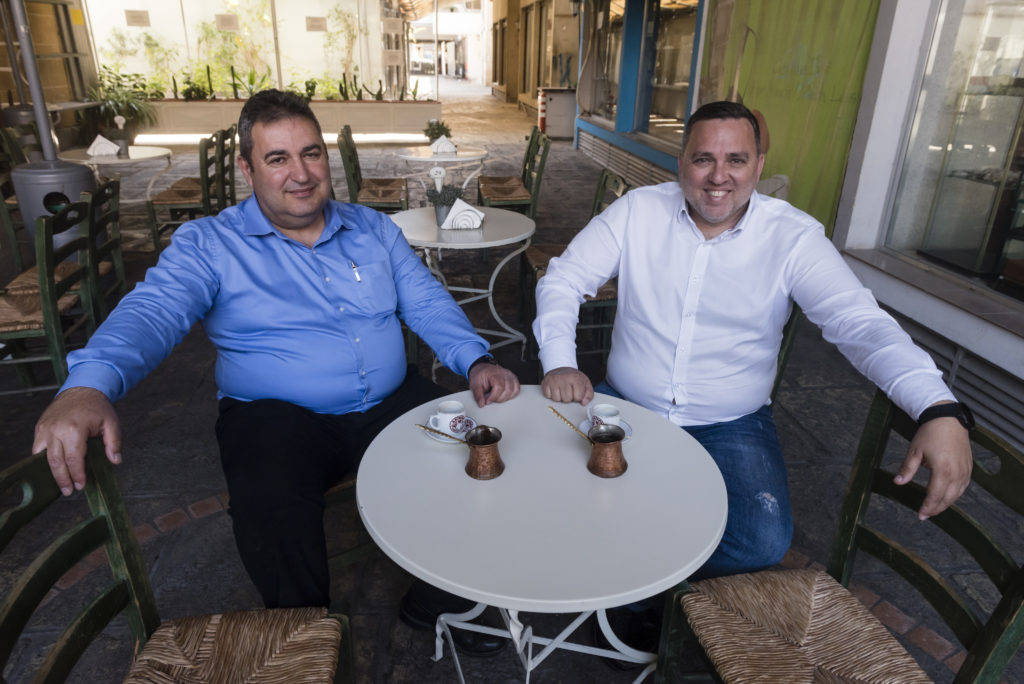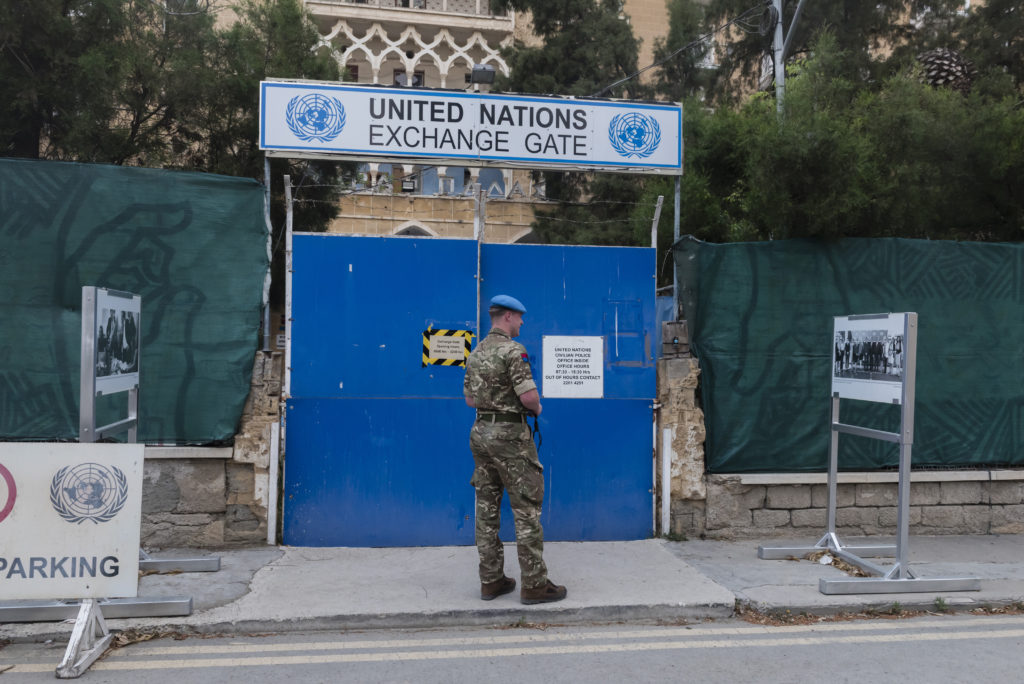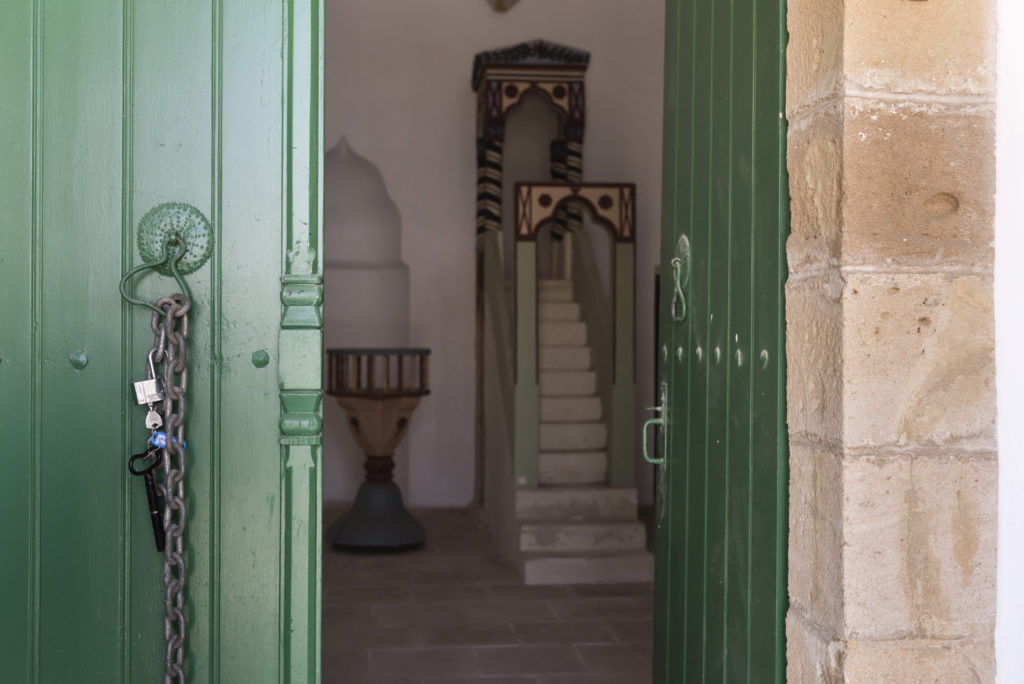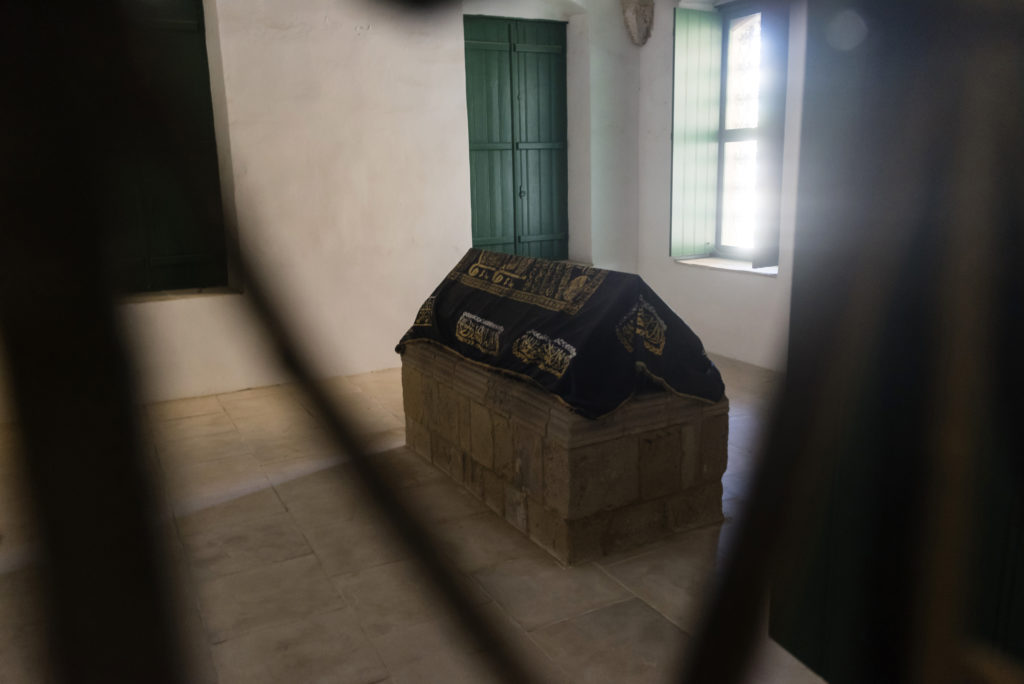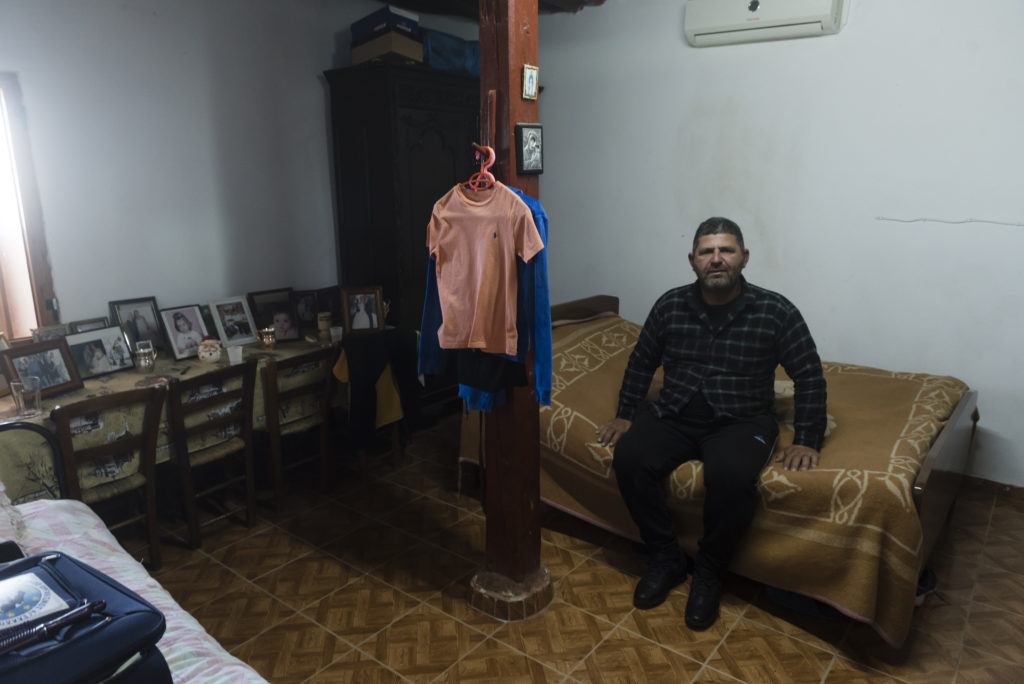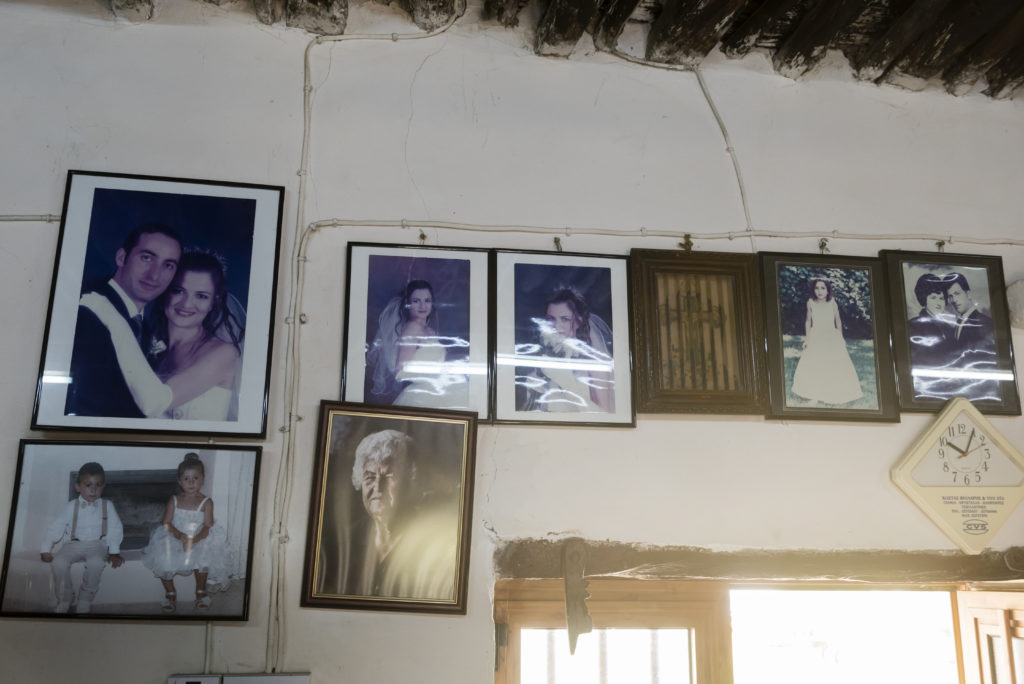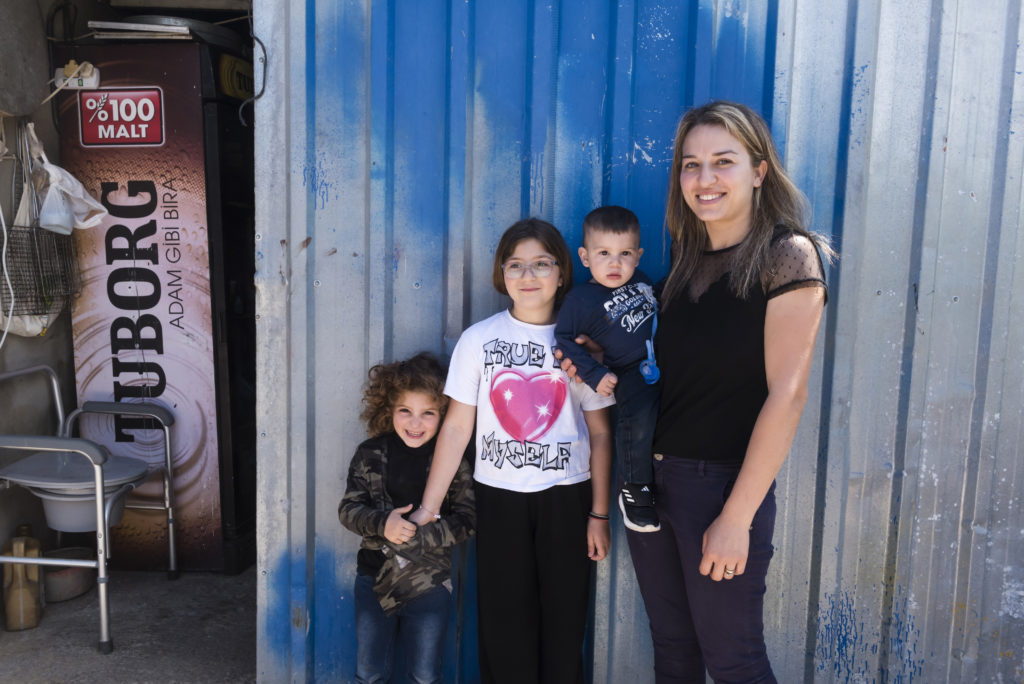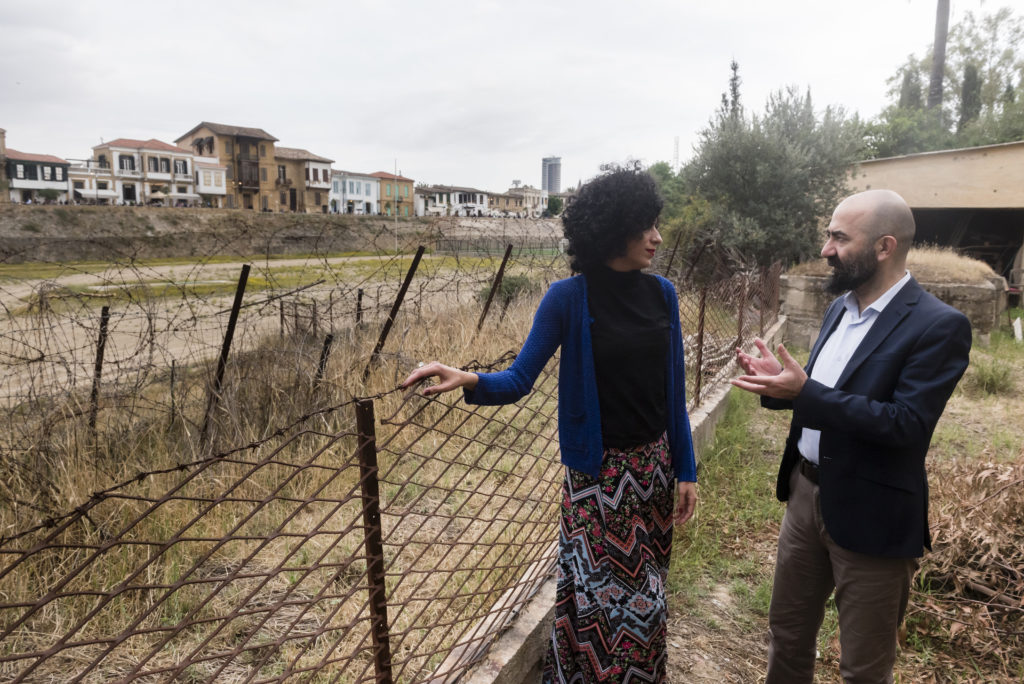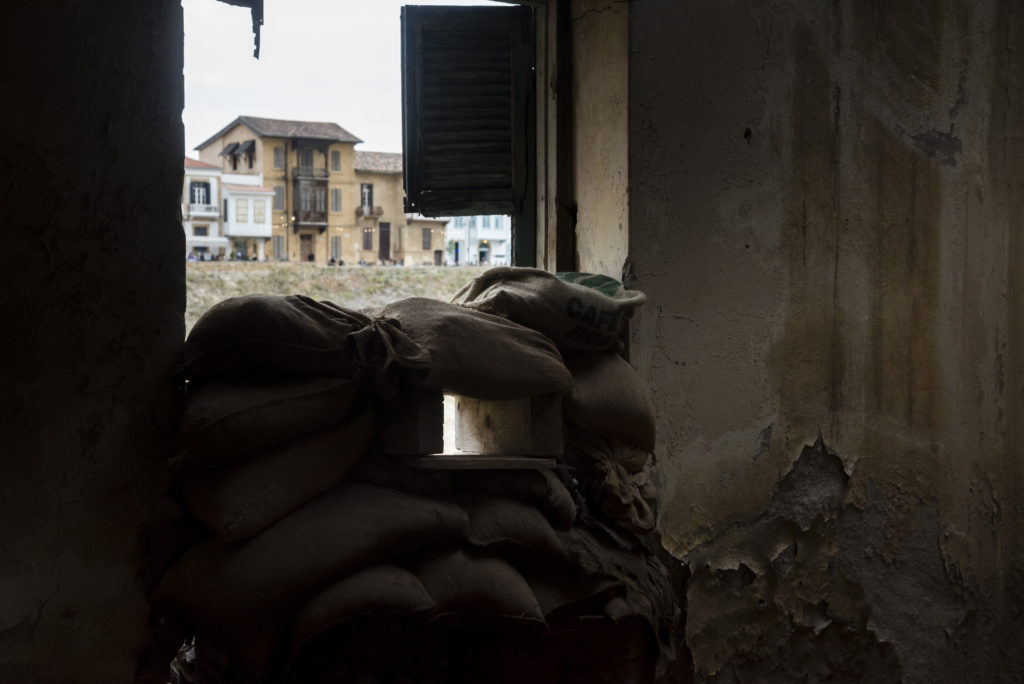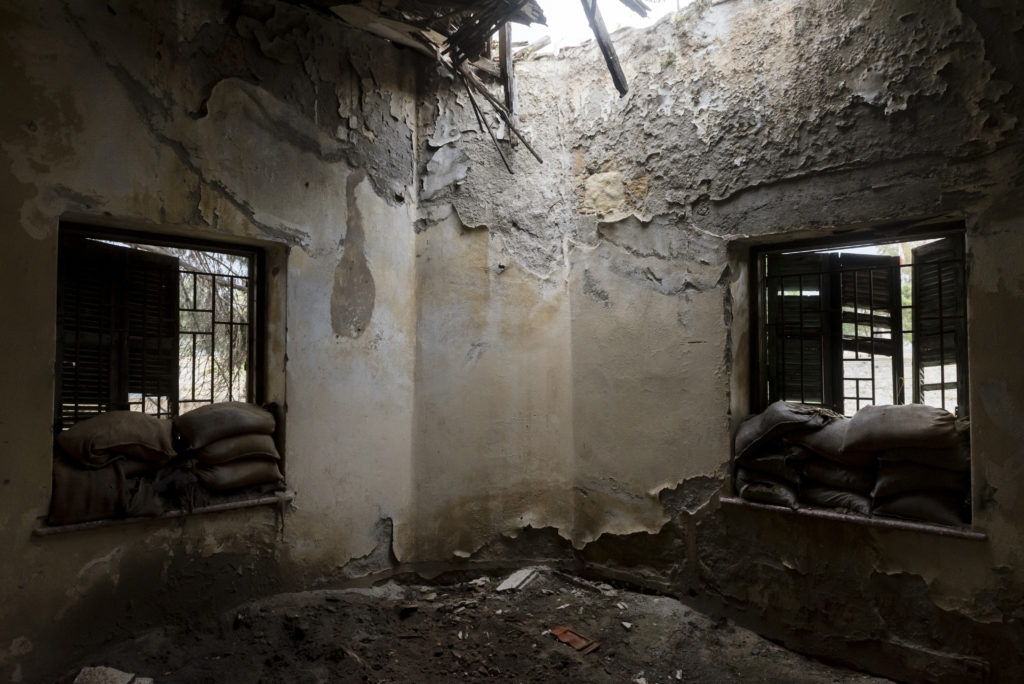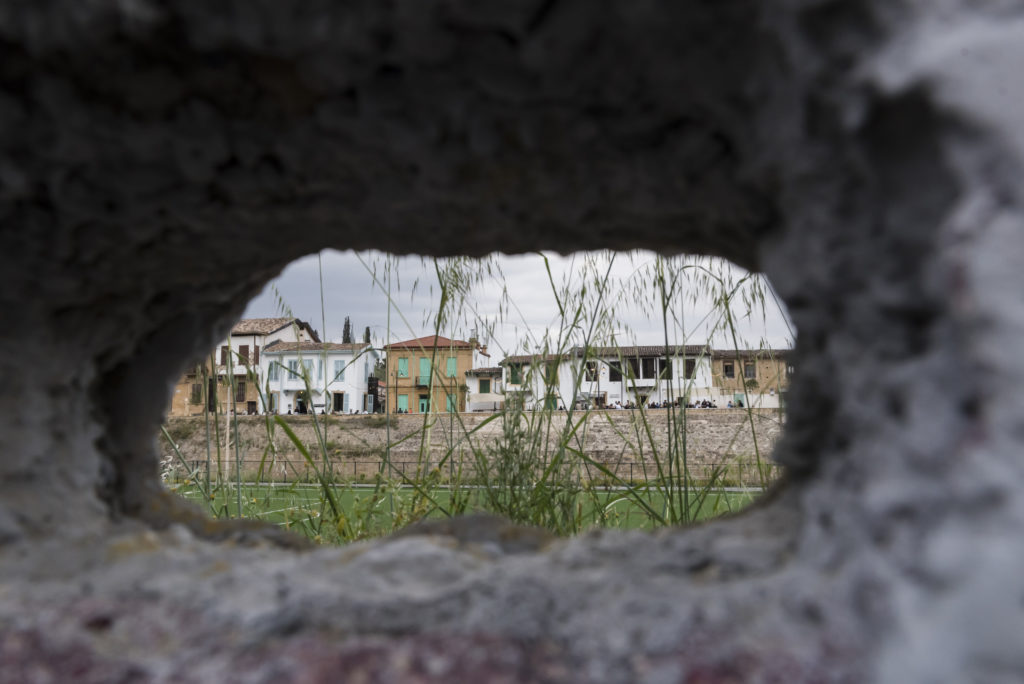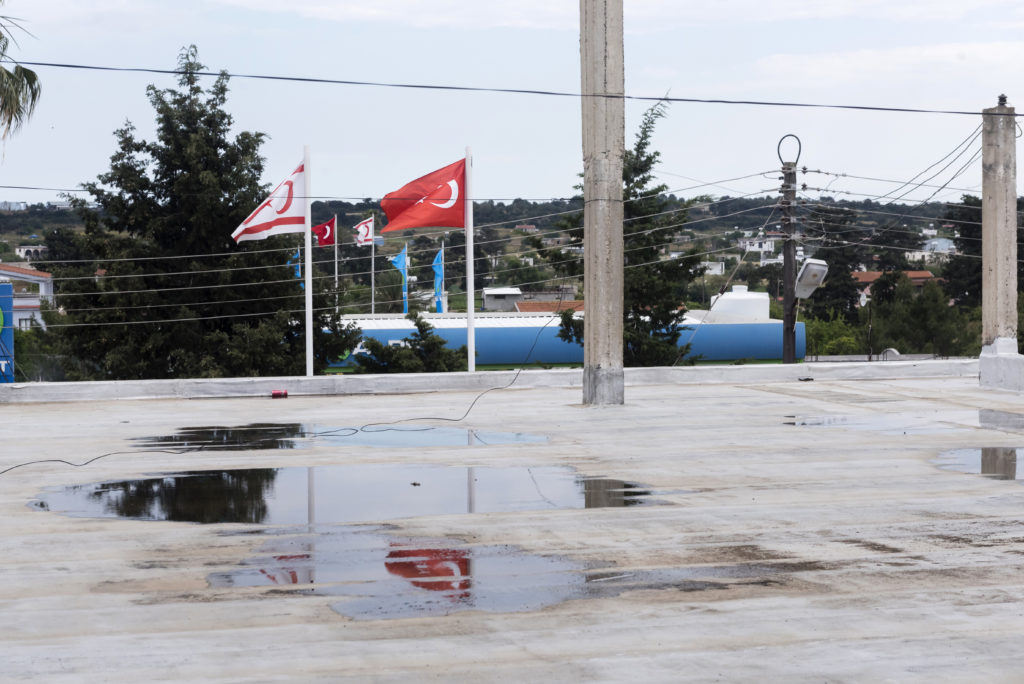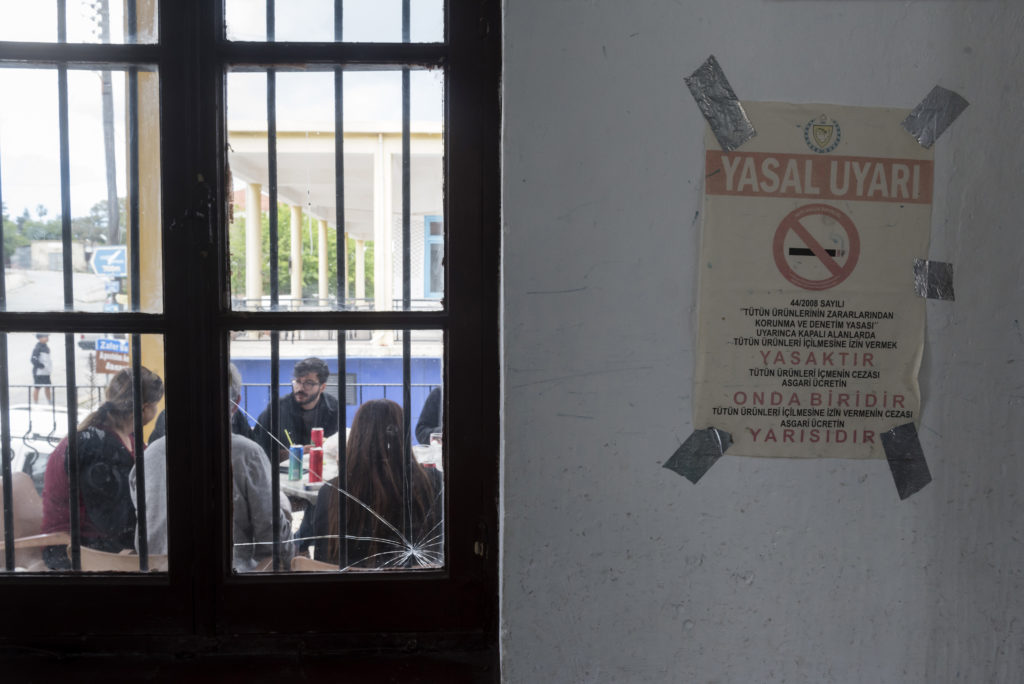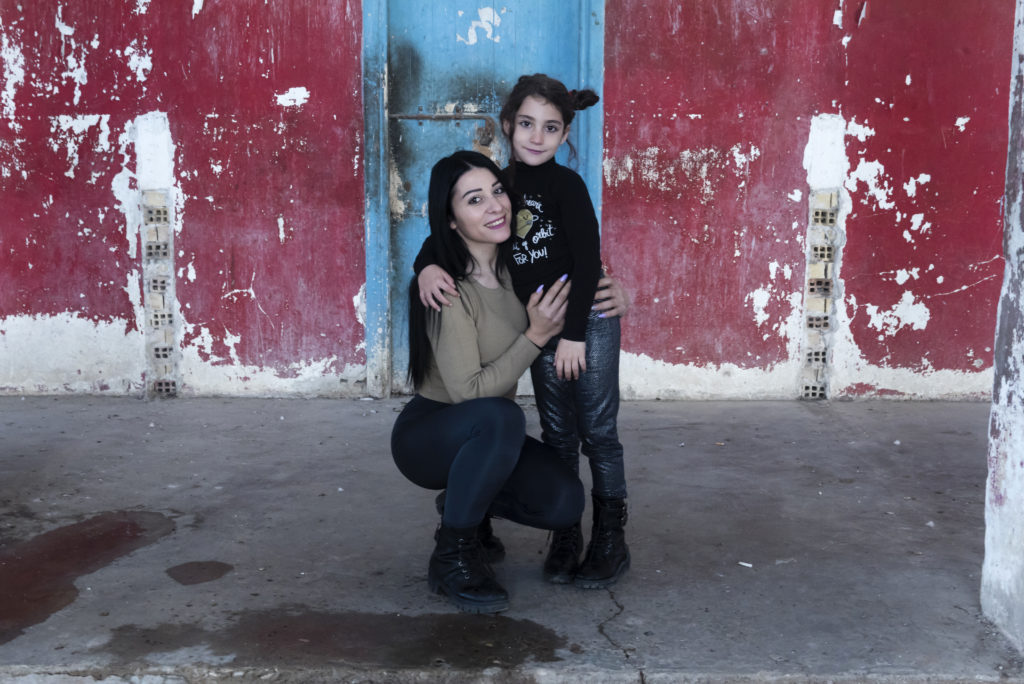For almost 40 years, Cyprus and its inhabitants have been divided. In 1974, the Turkish army invaded the northern third of the Mediterranean island in response to a coup d'état by nationalists who wanted to annex the territory to Greece. One hundred and sixty thousand Greek Cypriots fled to the south, while a smaller number of Turkish Cypriots found refuge in the north. Despite this partition, a handful of Greek Cypriots chose to remain in their village, Rizokarpaso, which has since become an isolated enclave on Turkish Cypriot land. However, bicommunal initiatives are trying to build bridges between the two communities, helping them to restore their heritage together.
After passing through one of the checkpoints in the divided capital of Cyprus to reach the north of the island, the small Orthodox chapels, left in ruins and dotted along the road, bear witness to a dark and turbulent past. More than two hours away, on this late April morning, the rising sun shines on the village of Rizokarpaso, renamed Dipkarpaz in Turkish almost 49 years ago. Located in the remote Karpas peninsula, it is home to a small community of Greek Cypriots, under the control of the “Turkish Republic of Northern Cyprus” (TRNC), self-proclaimed in 1983 and only recognised by Ankara.
Finding sanctuary
In the central square of the small village, the church of Saint Synésios faces a statue of Mustafa Kemal Atatürk, father of the Turkish Republic. The only café with a Greek sign welcomes regulars from the surrounding villages. Faithful Greek Cypriots, young and old, flock to the parish square to attend Sunday mass under the watchful eye of the TRNC authorities.
Unlike the 160,000 members of the Greek community who fled to the south, this community chose to remain in the area, despite the presence of military forces after the Turkish invasion of 1974. Today, there are around 245 Greek Cypriots in Rizokarpaso, compared to 2,000 before the conflict. They live cut off from the rest of Cyprus among the settlers from Turkey who have moved into the area en masse in recent years. “I grew up around this village and it’s a joy for me to be able to attend church here. I also thank the Turkish Cypriot leaders who are irreproachable and tolerant of us”, says Father Christodoulou after the mass, which on the occupied side never takes place without the approval of the TRNC authorities. For the clergyman, as for the rest of the landlocked community, the parish of St. Sinesios, named after a former bishop and protector of the Karpas region, helps to maintain the community spirit.
The political situation has made it difficult for even the international community to gain access for many years, and the building, built between the 11th and 12th centuries, has suffered damage, mainly due to lack of maintenance. However, in 2020, around 500,000 euros were spent on the conservation of the iconostasis, the partition of icons that separates the nave from the shrine, and the structure of the church. “Preservation is done in the name of culture, which knows no limits or boundaries, and not for any particular community”, preaches Father Christodoulou. The work is expected to be completed by July 2023. The restoration effort is thanks to the bi-communal Technical Committee for the Cultural Heritage of the Island, led by Sotos Ktoris, a Greek Cypriot, and Ali Tuncay, a Turkish Cypriot.
"In Cyprus, there are two versions of history."
The cultural heritage of Cyprus became collateral damage during the division of the island in 1974. Even today, in the occupied northern part, many damaged cultural sites can be seen. Turkish forces have used historical and religious buildings as military bases and a large number of artworks and artefacts have also been sold on the black market out of sight in the south, and in full knowledge of the Turkish authorities in the north.
“In Cyprus there are two versions of history. For Greek Cypriots, the events of 1974, and for Turkish Cypriots, the events of 1963 (violent intercommunal tensions that caused 134 deaths and the intervention of the Blue Helmets, ed.). Since then, the monuments have suffered. Our mandate, without politicising the issue, is to say that these buildings are for future generations, for humanity and for everyone,” says Ali Tuncay, who is 100 kilometres away, drinking a coffee in the Cypriot capital with his colleague Sotos Ktoris. “One of the major achievements of this committee is that we have abandoned the blame game between the two communities regarding the past. We are trying to depoliticise the issue in order to build bridges,” Ktoris adds.
Heritage without borders
Since its creation in 2008, following an agreement between the leaders of the two communities, the committee has received more than 20 million euros in the framework of the European Union’s Cohesion policy and its aid programme for the Turkish Cypriot community. For Sotos Ktoris “every cultural imprint left on the island by all the civilisations and people that have passed through Cyprus must be taken into consideration”. “We have decided that the monuments of every civilisation are part of our common shared heritage”, he summarises between sips of coffee. Like St. Synesios, 122 sites across the island have been restored or are being restored with the support of the United Nations Development Programme (UNDP).
In the south of the island, the port city of Larnaca is full of buildings dating from the Ottoman period. Tuncer Bagiskan, who lives in the north, explores for the first time the soon-to-be-completed renovation of the 18th-century Zouhouri Tekke mosque complex. Along with the Hala Sultan Tekke, and the Turabi Tekke, this site was one of the three main places of worship for the Turkish Cypriot community in Larnaca before 1974. “I’m quite pleased with the work, knowing that before there was a car park, that families settled there and hung up their laundry,” says the 75-year-old archaeologist. “Due to the war and the displacement of the population, the Zouhouri Tekke no longer received any visitors”, he explains. As he continues his inspection of the finished work, he sighs: “Before the war, the representatives of the two religions, the Orthodox priest and the imam, used to meet. But this connection has been broken, it’s a shame.”
According to Tuncer Bagiskan, who is writing a book on the Ottoman monuments of Cyprus in his spare time, the division of the island has also had enormous consequences for archaeological excavations in the north. “For a while, foreign archaeologists were banned from the island. The island’s cultural heritage would have been much better off if we had had a helping hand from the foreigners”, says Bagiskan, who praises the committee’s work but has no illusions. “Even today, there’s no communication between the antiquities departments on each side of the island, they need to unite, but I have no hope of this happening anytime in the near future.”
"Like my parents, I will never leave this place, I’ll stay until the end, if all goes well"
In a tree-and flower-lined street in Rizokarpaso, a few metres from the restored church, after mass, Demetris Giorgallis, 44, has other things on his mind. He is preparing a memorial for his father, who died in 2005, in the garden of his small and friendly family home. Demetris lives alone, surrounded by portraits of his many relatives hanging on his walls. “After the 1974 war, my parents decided to stay and they did the right thing. I will never leave this place, I’ll stay until the end, if all goes well”, says this farmer with conviction. “There’s no future here for young people, there’s no work and unfortunately the Republic of Cyprus hasn’t increased the allowance for the landlocked community, which has been stuck at 370 euros for years”, he laments.
However, the precarious situation has not prevented a number of young people living in the areas controlled by the Republic of Cyprus, from moving to the landlocked enclave. This is the case of Kyriaki Dimitriou, 26, a housewife who decided to join her partner from Rizokarpaso when she was 18. Together they run a farm and have three children. To help with their financial difficulties, every Wednesday, the couple, like other landlocked people, receive food provided by the UN. “At first, it was hard to live here. We’re not allowed to celebrate national holidays. We’re not allowed to display our flags… but as time goes by we’re getting used to it”, says Kyriaki with her daughter in her arms. “We don’t have any problems with the Turks. Since the opening of the checkpoints in 2003, the tension has decreased, compared to what it was like for my parents who lived through the curfew”, she explains. The opening of the checkpoints along the North/South Green Line has brought the two communities on the island closer together after 30 years of being isolated from one another.
In the buffer zone
In Nicosia, in the buffer zone controlled by the United Nations, which, two decades later, still separates the capital in two, Andromachi Sophocleous, 34, and Kemal Baykalli, 47, meet at their usual meeting point, in the middle of the Blue Helmets. They are co-founders of “Unite Cyprus Now” (UCN), a bi-communal platform which has been campaigning for the reunification of the island since 2017. For these activists, the European aid programme for the Turkish Cypriot community and the preservation of Cyprus’ cultural heritage are of paramount importance for the rapprochement of the two parties. “The EU’s support is essential. But its political perspective is absent”, Andromachi bemoans. “Support for the Turkish Cypriot community is one of the most promising resources, but it must be strengthened to reach as many Turkish Cypriots as possible”, explains the political analyst. “Supporting Turkish Cypriots and their development also means preparing them for the reunification of the island”, stresses Kemal, who like his colleague has always lived in a country divided by the green line.
As hope sprang up on the island, UCN was founded on the streets to urge the then leaders of both sides, Mustafa Akinci and Nicos Anastasiades, to take decisive action at the 2017 reunification talks in Crans Montana, Switzerland. But the UN-sponsored talks stalled and have been at a standstill for six years now. Andromachi sees this stagnation as “fertile ground for nationalist tendencies”.
Big failures and small victories
Kemal, who when he is not an activist dances the tango, the art of moving gracefully together in the same direction, notes with regret, the succession of missteps in this process. “After the failure in Crans Montana, things started to deteriorate. We failed to keep Akinci in power, a supporter of reconciliation with the Greek Cypriots.” The North and Turkey have radically changed their approach since the election of Ersin Tata in 2020. Backed by Turkish President Recep Tayip Erdogan, the leader no longer wants to hear about the federal solution supported by the UN and the EU. He is now putting a two-state scenario on the negotiating table, which would de facto recognise the sovereignty of the TRNC.
On the other side of the green line, the President of the Republic of Cyprus, Nikos Christodoulides, elected last February, was more rigid than his opponents on the issue of resuming talks during his election campaign. While he wants to relaunch the talks after the next Turkish presidential election in May and calls on the EU to play a more active role, his candidacy for the head of the Republic of Cyprus has been supported by parties that want a different model than a federation. “We have not seen any sign of openness to Turkish Cypriots from him”, Andromachi added in front of the barbed wire of the buffer zone.
"We mustn’t forget that 20 years ago it was impossible to cross from one side to the other."
In his view, “since the failure of the negotiations, things have become very difficult for intercultural bicommunal activities, because there’s not enough support. We have reached a stage where we need political initiatives from those who want a solution, but the current climate is not favourable.” As if to ward off bad luck, the two activists attend the premiere of a documentary on the checkpoints, which on this day marks the 20th anniversary of their opening. Twenty years ago, “we mustn’t forget that it was impossible to cross from one side to the other”.
In Rizokarpaso, for the oldest members of the village, the question of cohabitation remains a very thorny issue. The memory is still vivid and the tension still palpable today. Thirty-three year old Eleni Sinainou, an energetic young woman with black hair, runs the Greek Cypriot café opposite St. Synesios, along with her father, Iosif. Between two conversations in Turkish, she serves the customers and a few curious tourists who venture in, with her 7-year-old daughter, Melina, clinging to her neck. Eleni refuses to be called a “resistance fighter”, but recalls the teachers who used to come from the Republic of Cyprus in the south to teach them on the sly in 2003-2004 and the Turkish Cypriots who used to throw stones at her when she was little. But they “grew up together” in Rizokarpaso and “now Melina’s babysitter is Turkish”, she adds. A small victory on occupied ground.
This story is part of the YOUTHopia campaign, a journalistic project shedding new lights on the EU Cohesion Policy.
Cultural property: at the heart of conflicts
Although damage to cultural heritage is less publicised than the loss of human life, it is a common consequence of armed conflicts. Different legal and political options, such as, restitution, reconstruction, restoration and rehabilitation, are used to appease people and stabilise a situation. The material items that comprise a cultural heritage, are far more than mere objects, they are vectors of identity.
In Cyprus, the process described in the article was begun in a very particular and tense context, where communities of Turkish and Greek origin live together. Meltem Onurkan Samani, who is in the TRNC Presidential Office, explained that these restorations were intended to alleviate “historical wounds”. It sounds very utopian when you say it like that, but the model seems to work. Jointly renovating heritage is a way of reclaiming the history of Cyprus for those who live there. These collective actions also contribute to the respect of all, in a society that seeks peace in spite of the political divisions that still exist. It allows a kind of reconciliation around the common goods of the Cypriot population.
On the other hand, cultural property can often be targeted during conflict and used as a political and strategic weapon. As well as attacks on cultural property (theft, looting, spoliation, confiscation, destruction, etc.), heritage can also be ‘modified’ according to political ideologies. In other words, the traces of one culture are erased in order to restore another. This is, for example, what is currently happening in the Nagorno-Karabakh region where Armenia and Azerbaijan are fighting each other. Both sides have been called upon to respect each other’s cultural property. However on the 3rd February 2022, the Azerbaijani Culture Minister, Anar Karimov, announced the creation of a committee to remove “fictitious inscriptions left by Armenians on religious temples”. The aim is to erase the traces of Armenian culture from the cultural heritage that has fallen under their authority. The new measure and the acts committed were denounced by the European Parliament in a resolution on the 10th March 2022. The report states that “the elimination of traces of Armenian cultural heritage in the Nagorno-Karabakh region is achieved not only by degrading and destroying it, but also by falsifying history and trying to link it to ‘Caucasian Albania’(an ancient kingdom that disappeared in the 7th century, not to be confused with present-day Albania, Ed.)” . In this instance, heritage is not used as a means of pacification, but as a means of increasing tensions between people, to the point of erasing the memory and the existence of a culture. A weapon to falsify history.

